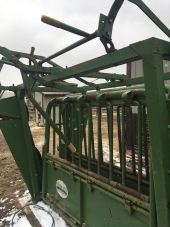Hi Josh,
Thanks for your questions and your interest in Dexter cattle. As far as age to breed heifers the first time, I recommend waiting until they are 20 months or a little older. Yes, you have to separate the young heifers from the mature cows so they don’t get bred at too early an age. I would also like to point out something to think about in your breeding plan. That is follow the cycle of nature. With the exception of some hibernating den mammals, most mammals give birth in the spring. Think about it from a cattle standpoint. Is it better for the calf to be born in the late fall or winter months when it’s cold and all the grass is dormant or in the spring when the rains come and there is lush new grass growth? Will the cow’s milk be richer and therefore provide better nutrition for the calf in the winter or in the springtime? Will the cow recover quicker from calving and meet her and the calf’s nutrition needs better during winter months or in the spring? It comes down to planning when to put the bull(s) in the mature cow herd for breeding. In my area I like to see my calves hit the ground from May to June. To do that, herd bulls are put in with the cow herd in August and left for 60 days. That gives the cows two heat cycles to get bred. Then the bull(s) are pulled out and put in a separate pasture. You could possibly leave the bull in with the cow herd year around if all the cows are on the same 60 day calving schedule but typically doing it that way calving gets strung out for one reason or another over time. If you leave the bull in you definitely have to wean and remove the heifers so they won’t get bred too early. As others have said Dexters can cycle and breed at an early age, something I had not experienced with other larger breeds I have worked with.
On your question about how many cows can one bull service, that depends on several factors. Those being sperm quality and quantity, age, proper structure and nutrition/body condition. Sperm quality and quantity can be determined by a fertility test done by a vet. A semen sample is collected then evaluated for number of live sperm present, morphology and motility. A young bull with excellent quality semen, good structure and good body condition shouldn’t have any trouble successfully breeding 30 cows in 60 days.









